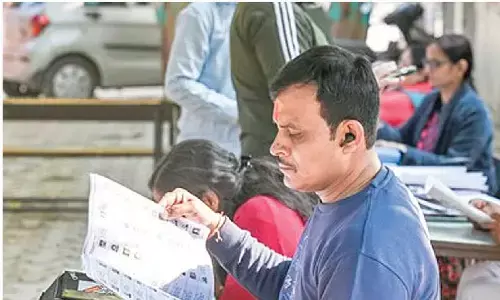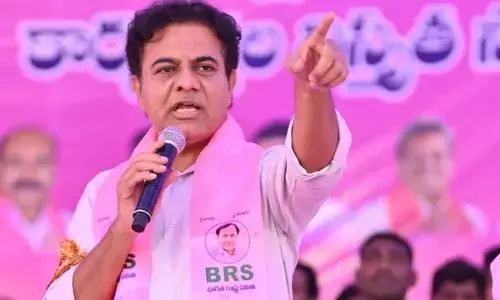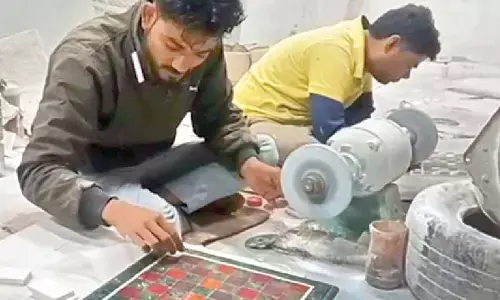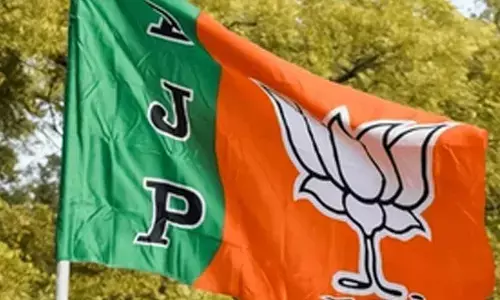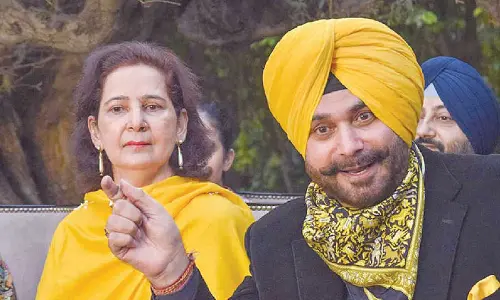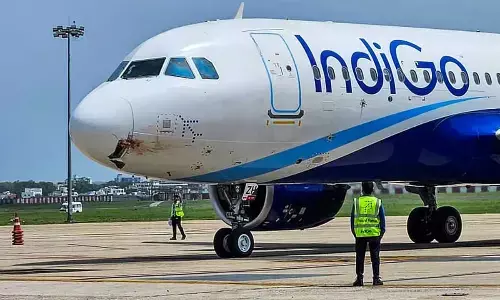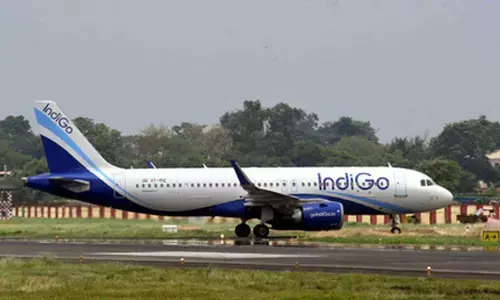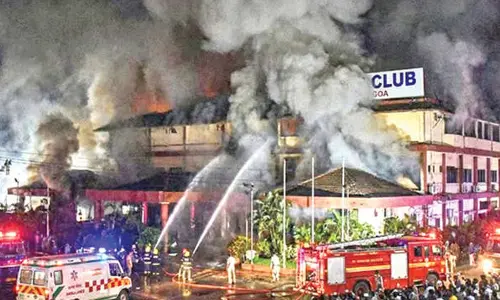Bruhathamma Brathukamma Bathukamma
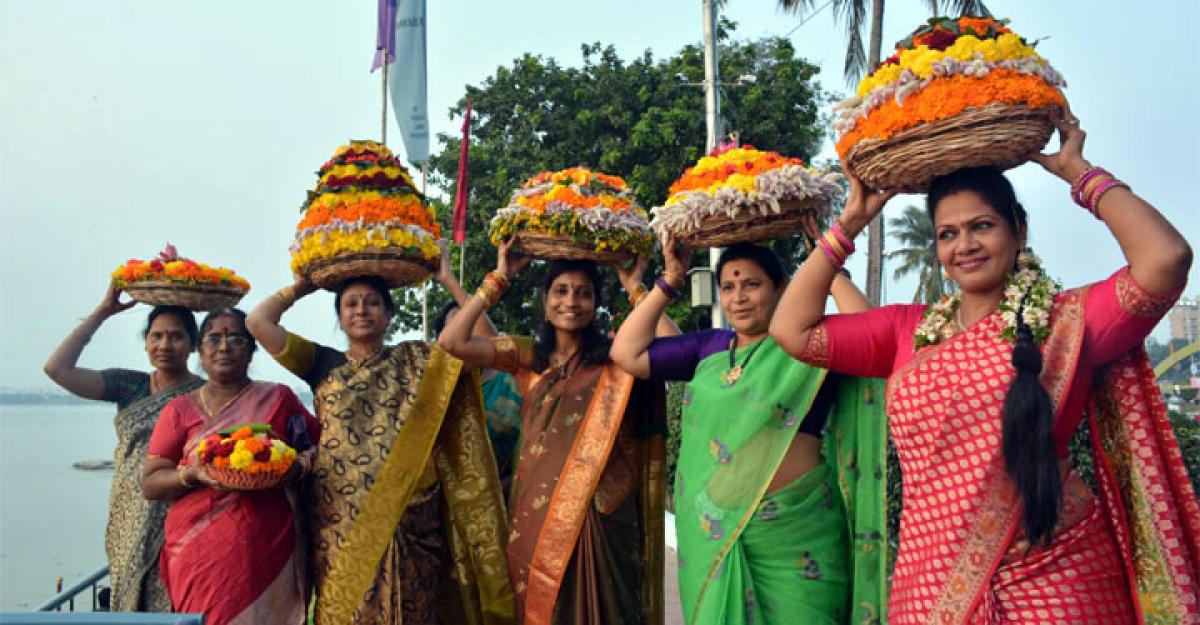
Telangana\'s floral festival is celebrated by the women of the region at this time, every year. The fest typically commences on the day of Mahalaya Amavasya and the nine-day festivities culminate with the \"Pedda Bathukamma\" festival on Durgashtami, which falls two days before Dussehra.
.jpg)
The floral festival, Bathukamma, is being celebrated all over the Telangana State with pomp and gaiety. The government has elevated the festival to national and international levels by recognising it as a State festival.
However, the historical origin of the festival has still not been traced. Many scholars have linked the roots of the festival to the kingdoms, which reigned in TS and AP. Here is an attempt to reveal the origins and historic values of the festival
Telangana's floral festival is celebrated by the women of the region at this time, every year. The fest typically commences on the day of Mahalaya Amavasya and the nine-day festivities culminate with the "Pedda Bathukamma" festival on Durgashtami, which falls two days before Dussehra.
The feminine felicitation festival represents the cultural spirit of Telangana. Arranged with different seasonal flowers in seven concentric layers, is a formation that takes the shape of a temple gopuram. Touted as State festival, preparations are on full swing to get Bathukamma an international acclaim.
However, till date, the historic roots of Bathukamma are not found. Some literary persons tried to link the roots to the Kakatiyas or Jain religion. But those theories have not gained wide acceptance in general by the people of Telangana.
It is accepted that the Bathukamma festival had a hoary past and was celebrated throughout the rule of Kakatiyas (1083 AD – 1323 AD) as subordinates of Chalukyas as well as independent rulers, and in later periods under different rulers.
Yet it is not understood as to why this festival has been celebrated only in Telangana even though they ruled the whole of Andhra Pradesh that includes the Coastal and Rayalaseema districts.
In this article, an effort is made to find the roots with the Rajesvara temple of Vemulavada constructed by Narasimha I and the Bhurhadesvara temple at Tanjavur constructed by Raja Raja Chola during 1006 - 1010 AD.
It is necessary to study the history of western Chalukyas and Cholas before going in to the roots of the Bathukamma festival.
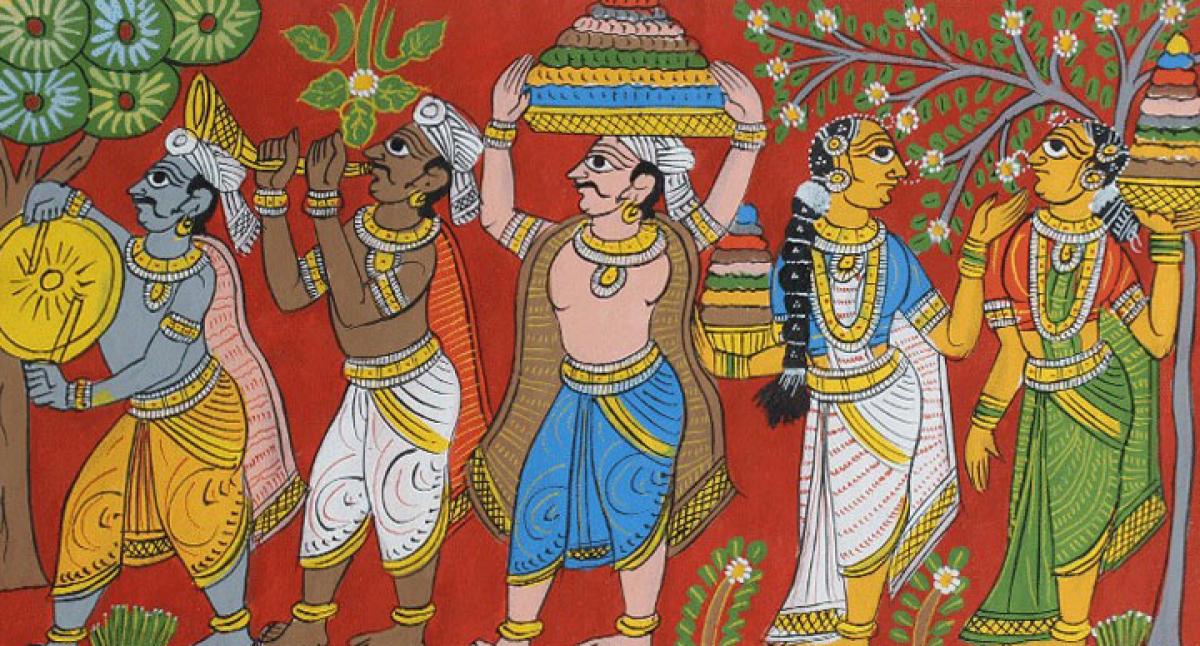
Western Chalukyas (973 AD – 1200 AD)
The subordinate ruler of Rashtrakutas, Tailapa II defeated Rashtrakuta king Karakka II and founded western Chalukya kingdom in 993 AD covering the northern parts of present Karnataka and present Telangana.
Cholas
Raja Raja Chola ruled the Chola dynasty during 985 AD – 1014 AD. He was very popular among the Chola rulers. During the reign of his father, Paranthaka Sundhara Chola II (957 – 970 AD), the Chola kingdom was limited to a small area.
During this period, Chola kingdom was attacked by the Rashtrakutas a number of times and it was badly damaged. At that time, Vemulawada Chalukyas were ruling the present day Karimnagar area. In those days, Raja Rajeshwara, the god of Vemulawada became the family god of Telangana people.
He was considered as a powerful deity because people believed he was a problem-solving god.Raja Raja Chola had a number of titles (birudas), and one among them is “Telinga Kula Kaala”, which means, “Yama Dharma Raja” (King of Death) to the Telangana people.
Rajadhi Raja Chola, to commemorate his victory over the Chalukyas, presented two life-size stone Dwarapaalaka sculptures brought from the Chalukya country as part of the loot, to his father Rajendra Chola.
Presently, one Dwarapaalaka is in the temple of Sarabheswara at Thirubhavanam constructed by Kulotunga III and another is in the museum of Bruhdeswara Temple at Tanjavur.
Vemulavada
It is situated about 35 kilometers to the west of Karimnagar. It was the capital of the Chalukya of Vemulavada, who ruled from 750 to 973 AD. Vemulavada preserves an excellent temple of ninth century known as Bheemeshvara temple.
This is said to have been constructed probably by Vemulavada Chalukya king Baddega (850 – 895 AD) and called Baddegesvaralaya. This is the most important temple showing forceful architectural style in which the religious ideals were amply demonstrated.
With the above historical facts, it can be assumed that the idea behind the gift of Rajadhi Raja Chola to his father Rajendra Chola I might have been rooted in the gift of Brihadeswara (Siva Linga) to Raja Raja Chola by his son Rajendra Chola who brought it from Vemulavada.
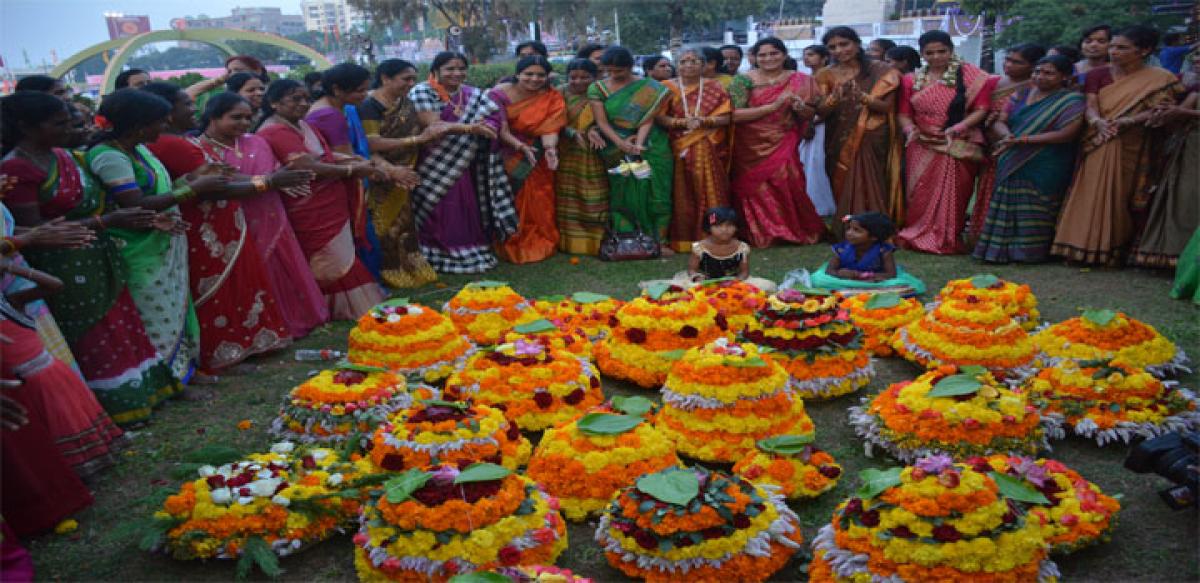
Shifting of Siva Linga from Vemulavada to Tanjavur by Rajendra Chola cannot be considered as a misdeed because the Dravidian predecessor, Ravansura used to carry the Siva Linga with him whenever he was on tours, in order to have undisturbed daily poojas to Lord Siva.
Shifting the Siva Linga (Bruhadeshwara) from Vemulavada to Thanjavur and erecting a huge temple to Brihadeswara, is a great achievement to Cholas; whereas this incident provoked protests in a large scale throughout Telangana.
They must have felt that great injustice is being done to Bruhathamma (Parvathi), so the women of Telangana might have taken this agony personally and created a Bathukamma protest by having processions that included singing of songs on Bathukamma.
Those protests have today become a part of the culture of Telangana women. It can be noted that as time passed, the Bruhatamma transformed to Brakhukamma, and finally the Bathukamma of present day. She has been considered as a replica of Sahakthi (Srusti).
Bruhath
The word “Bruhath” in Sanskrit was in use since many centuries. Bruhath means vast. The ‘Bruhatkatha’ was written in Prakrit by Gunadyudu, centuries ago. It was a famous treatise.
Bruhathkata was treated on par with Ramayana and Mahabharata, and was more popular among the general public in ancient days. The word Bruhath was commonly used by the people of Telangana in those days.
Bruhathamma Movement
Shifting of the popular Siva god of Vemmulavada, from the Telangana region by Rajendra Chola to Thanjavur, caused protests against the Chola kings. Taking the cause of Bruhatamma (Parvathi) left over in Vemmulavada in grief,
Telangana women took processions taking Bruhathamma (variety of flowers arranged in a conical shape) followed by singing different songs in memory of Bruhath Linga. This took in to a final festival form celebrated for nine days prior to Dussehra (Vijaya Dashmi) in the month of Ashvija maasam.
The celebration of Bathukamma is the outcome of the movement against the crime of Chola ruler over Telangana in a nonviolent form. This type of nonviolent form of satyagraha against tyrant rulers may be first of its kind in India, and the credit goes to Bathukkamma.
In the later period, this type of non-violent satyagraha movements took place during the rule of Kakatiya Prataprudradeva. Prataparudra Deva attacked the tribal kingdom of Pagidigidda Raju in the forest area of Warangal for default of yearly ‘kappam’ from Pagididda Raju.
In this war, Pagidigidda Raju, his wife and daughter Sammakka and Sarakka were killed. The people of Telangana area are celebrating Sammakka, Sarakka jatara since seven centuries now. This once again shows how Telangana people react to the injustice meted out to them.
.jpg)
Bathukamma Folk Songs
During the Bathukamma celebrations, different types of folk songs are played by dancing and clapping hands saying “Ouyyalo” at the end of each line of the song, around assemblage of Bathukammas.
A reference of Chola king by name Dharmangudu has been noticed in the following Bathukamma song and can be taken as conjectural evidence. Part of the song is as follows:
“Sri Laxmideviyu Ouyyalo, Srusti Bathukammaye Ouyyalo,
Puttina reethi jeppe, Battu Narasihma kavi,
Dhara Chola desham, Dharmangudanu Raju,
Aa raju bharyayu, Adi Satyavathi yandru.”
Kandooru Chodas
It is noticed that in some areas of Mahbubnagar district, Bathukamma is not celebrated. The reason for this non-celebration is the attachment of Kandoor Chodas with the Cholas of Tanjavur and Gangaikonda Cholapuram.
Kandooru Telugu Cholas ruled Kandooru-nadu with their capital at Kandoorpura. In fact, the origin of the Kandooru Chodas might be from Chola country and they might be feudatories of Cholas of Thanjavur for some time.
That is why they might be opposed to the spread of Bathukamma festival in the area under their control. Till date, in some areas of Mahbubnagar district, the tradition of playing Bathukamma is not found.
The non-violent Sathyagraha, through Bathukamma procession thus was replayed in the separate Telangana movement in a grandiose scale and finally, Bathukamma is transformed into an icon of the state.
The repetition of historical events in Telangana after 1,000 years reinforce the hypotheses that Bruhathamma (Brathukamma or Bathukamma) festival has taken birth as a nonviolent movement after the Chalukya - Chola war in the year 1004 AD.
Based on the circumstantial, historical and archeological evidences, I am sure a prima facie case is established. The advice given to researchers in history by a popular American Professor Anthony Brundage has guided me in my research.
He says, “Remember, the most historical evidence is open to a variety of interpretations, some more compelling than others... Make your conclusions as strong as the evidence, and the structure of your argument warrant, but do not push it beyond that point.”
In history, no finding may be complete and truthful. When sufficient proofs are not available, some imagination should play as conjecture. The imagination is not without base. The base may not be without imagination.
If this paper leads to further research, in the history of Bathukamma, the objective of this research is fruitful. Till that time, it is a ‘myth’ for a few people and a thousand- year-old ‘mystery’ for others.
By:Buchi Reddy Avala
This article was presented in All India History Seminar held in Kakatiya University in March 2015 in the presence of Prof. Sudershan Rao, Chairman, Indian Council of Historical Research and AK Goel IAS(Retd), Adviser to Government of Telangana.








